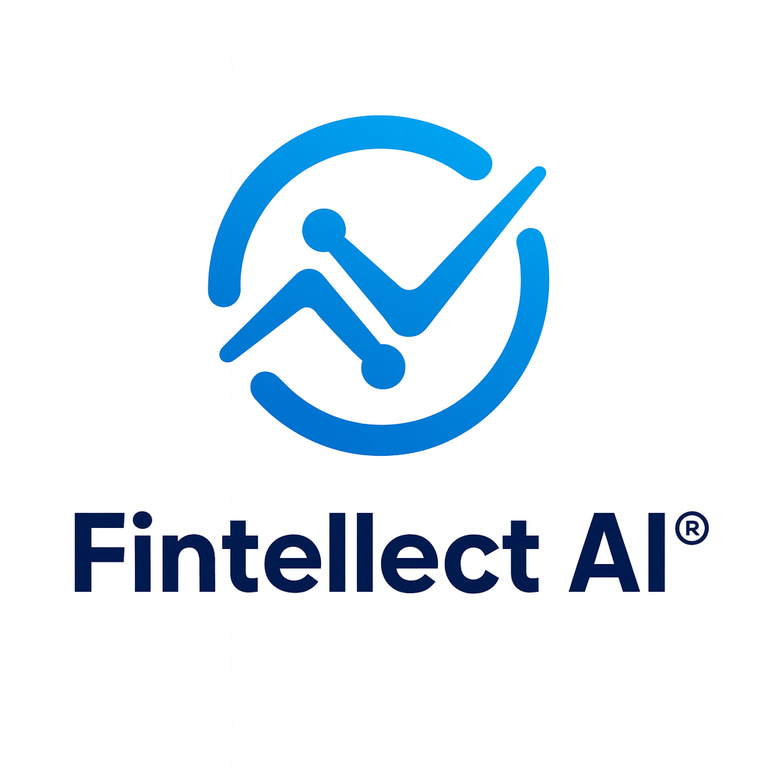Why 80% of AI Projects in Finance Fail – And How to Avoid It
The uncomfortable truth about AI implementation in financial services – and your roadmap to success
CFO INSIGHTS
Zhivka Nedyalkova
6/24/20255 min read


Why 80% of AI Projects in Finance Fail – And How to Avoid It
The uncomfortable truth about AI implementation in financial services – and your roadmap to success
The promise of AI in finance is intoxicating: fraud detection that catches every suspicious transaction, credit scoring that perfectly predicts default risk, algorithmic trading that consistently outperforms markets. Yet behind the glossy case studies and vendor demonstrations lies a sobering reality – 80% of AI projects in financial services never make it to production, and of those that do, 70% fail to deliver measurable business value.
This isn't a technology problem. It's a strategy problem.
The Failure Landscape: Why AI Projects Crash and Burn
Financial institutions are burning through AI budgets at an unprecedented rate. McKinsey's latest research reveals that financial services companies have invested over $100 billion in AI initiatives since 2020, yet only 20% have achieved significant ROI from their AI investments.
The failure patterns are remarkably consistent across institutions:
Data Problems (35% of failures): "We'll figure out the data later" becomes the kiss of death. Projects launch with incomplete, biased, or incompatible datasets that doom AI models from day one.
Organizational Resistance (28% of failures): Brilliant algorithms meet human reality – and humans win. Risk managers don't trust black-box decisions, compliance teams fear regulatory scrutiny, and business users prefer familiar processes.
Technical Debt (22% of failures): Legacy systems weren't designed for AI integration. Projects get trapped in proof-of-concept purgatory, unable to scale beyond pilot implementations.
Regulatory Complexity (15% of failures): The AI Act, GDPR, and financial regulations create compliance minefields that paralyze decision-making and stall deployments.
The Success Patterns: What Winners Do Differently
The 20% of AI projects that succeed aren't just lucky – they follow fundamentally different approaches from the failures. After analyzing dozens of successful AI implementations across European financial institutions, clear patterns emerge.
1. Problem-First, Not Technology-First Thinking
Successful AI projects start with pain points, not possibilities. Deutsche Bank's fraud detection overhaul began not with "let's implement machine learning" but with "our false positive rate is killing customer experience and costing €50 million annually."
The winning approach: Identify specific business problems where AI can deliver measurable impact. Define success metrics before touching any technology. If you can't articulate the business case in one sentence, you're not ready to start.
2. Data Foundation Before Algorithm Innovation
Winners treat data as their primary asset, not an afterthought. ING's successful credit risk modeling project spent 60% of its timeline on data architecture, cleaning, and governance before building any ML models.
The data-first framework includes:
Data Quality Assessment: Audit completeness, accuracy, and consistency across all source systems
Bias Detection: Identify and mitigate historical biases that could perpetuate discrimination
Governance Framework: Establish clear ownership, access controls, and quality standards
Integration Architecture: Design systems that can scale from pilot to production
3. Human-AI Collaboration, Not Replacement
The most successful AI implementations augment human decision-making rather than replacing it entirely. Santander's anti-money laundering system doesn't automatically flag transactions – it prioritizes cases for human investigators, reducing false positives by 70% while improving detection rates.
Effective human-AI collaboration requires:
Explainable AI: Ensure models can articulate their reasoning to human users
Override Mechanisms: Allow human experts to challenge and correct AI decisions
Continuous Learning: Create feedback loops where human insights improve model performance
Trust Building: Gradual deployment that builds confidence in AI recommendations
4. Regulatory Compliance as Competitive Advantage
Instead of viewing regulation as a constraint, winning institutions use compliance as a differentiator. BBVA's AI governance framework exceeds regulatory requirements, creating customer trust that drives business value.
The compliance-first approach includes:
Proactive Governance: Implement AI governance frameworks that anticipate regulatory changes
Transparency by Design: Build explainability and auditability into AI systems from inception
Risk Management Integration: Align AI risk management with existing operational risk frameworks
Stakeholder Engagement: Involve legal, compliance, and audit teams from project inception
The Implementation Playbook: Your Success Framework
Phase 1: Strategic Foundation (Months 1-2)
Executive Alignment: Secure C-suite sponsorship with clear ROI expectations and success metrics. AI projects without executive backing have a 90% failure rate.
Use Case Prioritization: Focus on 2-3 high-impact use cases rather than spreading resources across multiple experiments. Successful institutions typically achieve 3x better ROI by concentrating efforts.
Team Assembly: Build cross-functional teams including data scientists, business analysts, compliance experts, and domain specialists. The most successful AI projects have 40% of their team members from business units, not just IT.
Phase 2: Data and Infrastructure (Months 3-5)
Data Architecture: Invest heavily in data infrastructure, governance, and quality. This isn't glamorous work, but it determines project success more than algorithm choice.
Technology Stack: Choose proven, scalable technologies over cutting-edge solutions. Production reliability trumps academic novelty.
Pilot Environment: Create production-like environments for testing and validation. Projects that skip this step face 80% longer deployment timelines.
Phase 3: Model Development and Validation (Months 6-9)
Iterative Development: Build simple models first, then add complexity. Start with interpretable algorithms before moving to deep learning approaches.
Rigorous Testing: Test models across multiple scenarios, time periods, and customer segments. Include stress testing for edge cases and regulatory scenarios.
Performance Monitoring: Implement real-time monitoring for model drift, bias, and performance degradation. Models that aren't monitored fail within 18 months on average.
Phase 4: Deployment and Scaling (Months 10-12)
Gradual Rollout: Deploy to limited user groups before full implementation. This reduces risk and allows for iterative improvements.
Change Management: Invest heavily in user training and change management. Technical success means nothing without user adoption.
Continuous Improvement: Establish processes for ongoing model refinement and business value optimization.
The Cultural Transformation
Technical implementation is only half the battle. The most successful AI projects transform organizational culture, creating institutions that think algorithmically about business problems.
This cultural shift requires:
Data Literacy: Train business users to understand and interpret AI outputs
Experimentation Mindset: Encourage controlled risk-taking and learning from failures
Cross-Functional Collaboration: Break down silos between IT, risk, compliance, and business units
Customer-Centric Focus: Align AI capabilities with customer needs and experiences
Beyond Implementation: Scaling AI Excellence
Institutions that successfully implement their first AI projects face a new challenge: scaling AI capabilities across the organization. This requires moving from project-based thinking to platform-based infrastructure.
The scaling framework includes:
AI Platforms: Build reusable infrastructure and tools that accelerate future AI projects
Center of Excellence: Establish centralized expertise that supports distributed AI development
Governance at Scale: Create frameworks that maintain quality and compliance across multiple AI initiatives
Talent Development: Build internal AI capabilities rather than relying entirely on external consultants
The Future of AI in Finance
The financial institutions that emerge as AI leaders won't be those with the most sophisticated algorithms – they'll be those that master the integration of technology, business strategy, human expertise, and regulatory compliance.
The AI revolution in finance is just beginning. The question isn't whether your institution will use AI – it's whether you'll be among the 20% that use it successfully. The difference between success and failure isn't technology; it's execution discipline, strategic thinking, and organizational commitment to transformation.
Your AI journey starts with a choice: join the 80% who fail, or build the foundation for sustainable AI success. The roadmap is clear – the execution is up to you.
